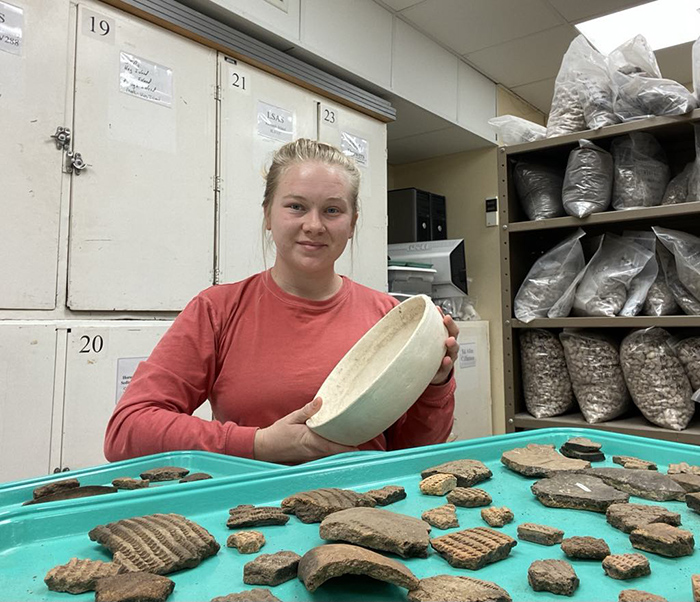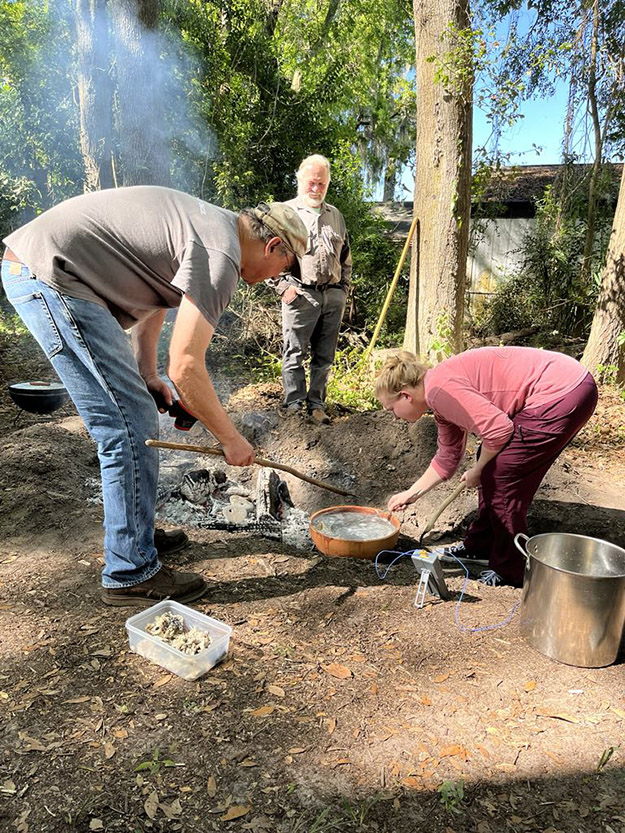New Station Archeologist at the University of Arkansas Pine Bluff Research Station
 Emily R. Bartz has joined the Arkansas Archeological Survey as Station Archeologist at the University of Arkansas Pine Bluff Research Station. Succeeding the work of Dr. Andrew Beaupré, Emily plans to leverage her experience in the study and re-creation of ancestral food practices and cooking technologies to further public interest and participation in archeology and local history within the Pine Bluff station area.
Emily R. Bartz has joined the Arkansas Archeological Survey as Station Archeologist at the University of Arkansas Pine Bluff Research Station. Succeeding the work of Dr. Andrew Beaupré, Emily plans to leverage her experience in the study and re-creation of ancestral food practices and cooking technologies to further public interest and participation in archeology and local history within the Pine Bluff station area.
Emily is coming to us from the Laboratory of Southeastern Archaeology at the University of Florida, where she is completing her PhD under the advisement of Dr. Kenneth Sassaman and Dr. Kate Grillo. She earned her bachelor’s degree in anthropology from Grand Valley State University in Michigan in 2016, guided by Dr. Janet Brashler, and later received her master’s degree from Illinois State University under the mentorship of Dr. James M. Skibo. Throughout her academic journey, Emily has gained a broad range of experiences, including certifications in underwater archeology and geographic information systems (GIS), teaching a variety of undergraduate courses, developing archeological field schools, and managing archeology labs in Michigan, Illinois, and Florida.
Emily’s research interests focus on the precontact foodways of eastern North America. Her fascination with this area began as an undergraduate at Grand Valley, where she studied Woodland period (AD 0-1600) subterranean food storage features in west Michigan. She continued to explore food practices and land-use patterns during her master’s studies, investigating subterranean food storage and seasonal settlement patterns on Grand Island, Michigan, in Lake Superior.


